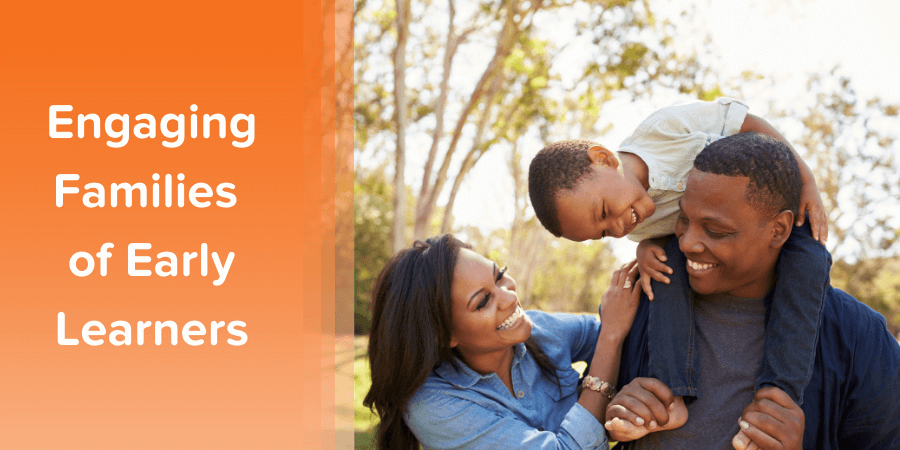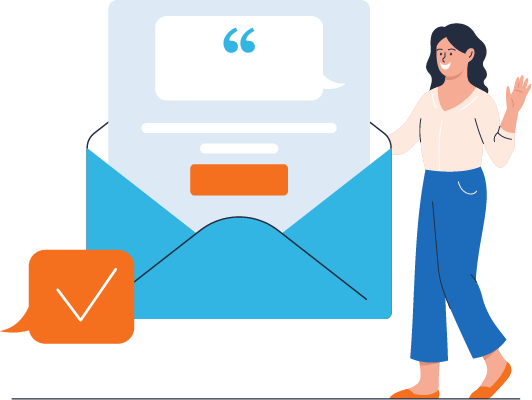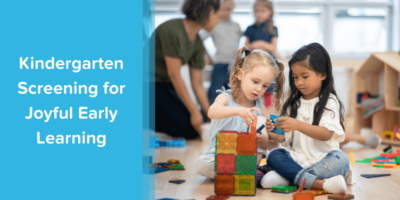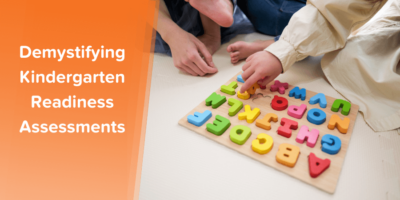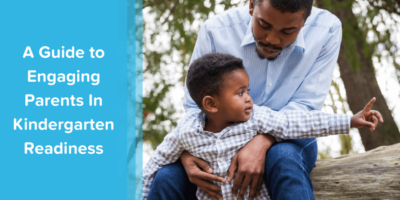by Maren Madalyn, contributing writer
I am a proud ‘auntie’ to a spunky three-year-old (let’s call her Jaz). Jaz will soon begin preschool, a critical milestone in her education. I am so excited for the partnership that her parents will experience with Jaz’s new teacher, too. After all, family engagement in early childhood education is absolutely essential for long-term student success.
But whenever I ask her parents about this milestone toward school readiness, I sense both excitement and terror, even loss.
“I’m not a real teacher, but I liked playing one. I’m going to miss that,” Jaz’s mother recently confessed to me, chuckling nervously.
I was not prepared for this response. I studied child development and human biology for years in school. I read plenty of academic papers and books about early childhood development milestones. It was humbling to witness Jaz’s immense growth in action. More importantly, I saw the crucial role that all of Jaz’s family members played in her education journey up to this point.
I smiled at Jaz’s mom. “Actually,” I replied, “you’re one of her very first teachers!”

And it’s true – her grandparents helped her practice the correct pronunciation of ‘apple’ in English, Farsi, and Kyrgyz. Her parents introduced Jaz to her greatest love (crunchy dried leaves) and taught her how to carefully pick them up by the stem to avoid crushing their delicate frames. And yes, her father even managed to persuade Jaz to pick up her own toys, turning the chore into a game by counting out loud how many toys she grabbed in ten seconds.
Jaz’s entire family has been educating her every single day of her life since she was born. Though her learning happened outside a formal classroom setting, Jaz was already a student, and her own family members were her very first teachers.
As I reminded Jaz’s mom that day, her family will continue to be key players in her child’s development and make a positive impact on her learning journey.
Family engagement enables high-quality early learning
As Jaz’s family knows well, learning begins well before a student first sets foot in a classroom. From the moment they are born up through age 5, kids experience immense developmental changes physically, emotionally, and socially. Parents, caregivers, and guardians really are a child’s first teachers. They help their ‘students’ learn to navigate the world, their emotions, and the amazing physical changes that kids experience in these early years.
As children enter a preschool classroom, their families continue to be crucial partners to the early childhood professionals helping little ones learn. In fact, it is imperative that early childhood educators make a commitment to establishing strong working relationships with parents, caregivers, and guardians. These partnerships create the best environment for students to experience healthy development and growth.
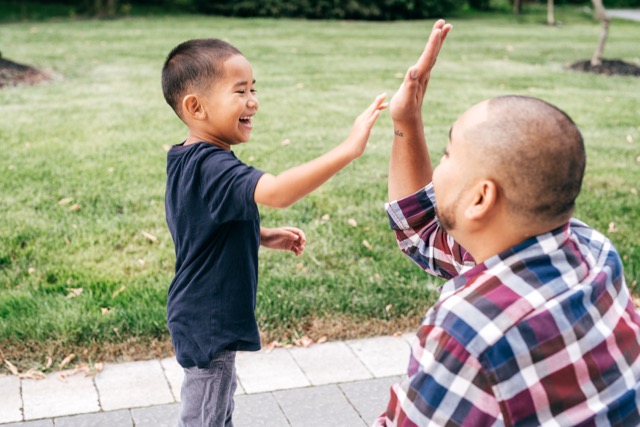
Why is family engagement important? Research shows that robust home-school partnerships result in positive outcomes for students and schools. These benefits range widely, from improved graduation rates to better outcomes for children from historically under-served communities and increased teacher satisfaction. In short, families are meant to be more than spectators to their children’s education – they need to play on their learning team.
Collaborative relationships with shared responsibility for children’s learning are especially powerful in early childhood education. When families and educators co-design support for the youngest learners, excellent results follow, including positive improvements in a child’s cognitive development and increased family well-being. Family engagement in early childhood education ultimately contributes to long-term success in a child’s life. Families simply make student learning possible!

What positive family engagement in early childhood education looks like
Early learning organizations and Head Start programs have many family engagement resources available to help them build strong, positive relationships with families.
At the highest level, USDHHS Head Start developed a comprehensive framework for schools and other early learning organizations to establish family engagement focuses and strategies. Bweikia Foster Steen, EdD., an associate professor of education at George Mason University, developed a more tactical method to guide a school’s partnerships with families. Called the “Five Rs”, this model states that in order to increase effective family participation with early childhood professionals, families need respect, responsiveness and reassurance, relationship, reciprocity, and reflection from their early learning partners.
Importantly, all of these approaches share several common core elements that reflect what we know works best in a family engagement program. In sum, strategies used to nurture family and community relationships can deliver positive outcomes when they:
- Are equitable and culturally responsive;
- Foster mutual respect and trust;
- Align families and educators to student learning goals;
- Leverage family strengths and assets;
- Are doable and fun.
How can educators best support families in meaningful ways to get involved in their children’s learning, while also incorporating these qualities?

Building family partnerships in early learning
We at ParentPowered have partnered with hundreds of schools and organizations to bolster their family engagement strategies and nurture parent-child relationships. Families of early learners love our evidence-based activities for their child’s learning and development shared weekly via texts.
To help you foster your own family-school relationships in early childhood education, we’ve compiled five of our favorite tips, practices, and resources for reducing barriers to family engagement and creating a positive family experience. Share them with your team and families!
1. Establish trust from the start
Young children thrive in structure and routine – in fact, they need it to feel safe. Creating consistent systems and boundaries establishes trust in parent-child relationships.
Similarly, family-school relationships also thrive when educators and families establish mutual trust and expectations for ongoing partnership from the start. This trust can serve as a model for the family-child relationship, too. The same principles apply, and early childhood educators are well positioned to help families cultivate and encourage stronger parent-child relationships at the same time they build trust between families, children, and their learning organizations.
As families arrive at your program, ensure your family and community engagement starts on the right foot. The Virtual Lab compiled wonderful ideas and activities for preschool programs to create a welcoming, inclusive environment for families. Here are our favorites:
- Ask families about their child’s favorite toys, books, home routines, general likes or dislikes, or places to go in the community.
- Confirm families’ preferred language for receiving materials. Ensuring your resources are available in home or preferred languages signals inclusivity to your families.
- With family consent, display photos of families and students around the classroom, where both parents and students can easily see them.
- Utilize active listening skills with families, especially when gathering their input about your programs. Effective and respectful communication with families is crucial to establishing trust and developing a positive school climate for students.
Read our recent blog post for more information about ways to further engage families and build mutual trust.

2. Build two-way communication routines
All relationships need clear and consistent communication between parties. While traditional family engagement focuses on communication from school to home, it is just as vital that staff send information in the other direction, too.
Establish routines with families that emphasize two-way communication. Regular bidirectional sharing between home and school sets the expectation that families are partners in their child’s education, not bystanders. It also encourages parents to reach out to schools and that their outreach is welcomed by school staff.
Follow these communication tips to boost family and community engagement in your organization:
- Get creative with students’ take-home folders each week, going beyond the usual work samples or school information. For example, insert suggestions for parental well-being or share a family activity to do at home. Including a notepad for parents to write down their experiences or reflections offers an easy family involvement opportunity — all they need to do is send it back to school in their student’s folder. These gestures add value to the entire family unit’s relationship with their school and create a unique opportunity for contact between teachers and parents.
- Design culturally responsive methods of communication that include everyone in your parent community. For example, as best as possible, keep messages to families simple and relatable so that the information shared is understood across backgrounds and cultures. For in-person or virtual events, using a translator helps convey the intended meaning of school communications to multilingual families. Translators also ensure educators in turn have the opportunity to hear their families’ input directly, so they feel supported, too. Our tip sheet for culturally relative family engagement offers more ways to create inclusive connection moments with families.
- On a broader level, encourage staff to reach out proactively to families and share positive updates about what their children are doing during the day. Staff can also offer learning activities for families to do at home, then check in to see how they are going. These tactics support a growth mindset in young learners. Better still, it also helps adults shift out of a fixed mindset perspective and cultivate their own growth mindsets as models for their children.
- Practice active listening in your conversations among program staff and families. When incorporated into all facets of a learning environment, these communication skills foster connection, respect, and trust among adults and children alike. The results of active listening practices can greatly improve school climate in the long run.
Download our guide to crafting communications with families for inspiring and meaningful ways to connect with your families.

3. Play, play, play!
Young learners growly tremendously through play during the early years of their life. Play activates core skills development in children ranging from basic hand-eye coordination to stress relief all the way to the complexities of social skills and social-emotional development. Better yet, adults also benefit tremendously from play. Parental play can lower stress levels, encourage positive coping strategies, and even boost overall physical health. These trends hold true across different socioeconomic backgrounds, too.
Though certainly fun, play may not strike most families as a critical form of learning. That’s OK! Take time to share with family members about what you observed during their child’s play at school and highlight its impact on children and their learning goals.
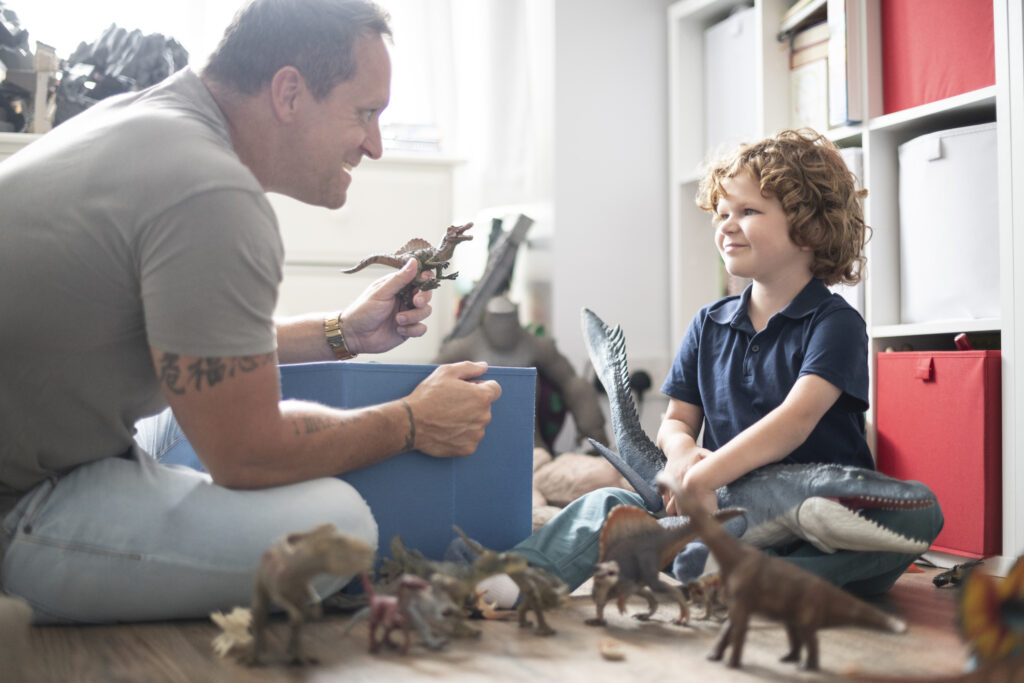
You can also encourage families to practice reflecting on their child’s play at home. Then you can guide them to make their own connections between play, a child’s healthy development, and growth in their students’ skills or knowledge.
This powerful story from an early childhood education group in Arkansas walks through their approach to teaching children and families all about the power of play. The best part? Their program uses family play as the primary activity! Take a look at the templated resources and use them in your own communities.
4. Expand learning with at-home activities
Parents are often as busy as educators, so it is important to consider ways for families to engage in student learning around time constraints. The best method is to offer bite-sized activities that both build specific abilities, like early reading skills or numeracy skills, and then fold into everyday home routines.
For example, guide parents to practice matching colors with their children, a simple family math activity to foster observational skills necessary for the future. Even toddlers benefit from easy math activities tied into their daily schedule. Or, try asking parents to count the number of steps their child takes from their door out to their mailbox.
Family engagement activities at home come with an added bonus: boosted parent confidence. Parental involvement in these activities reinforces that families can directly impact (and improve!) their child’s growth and academic success. Such reassurance feeds right back into the mutual trust and communication built between home and school.
Our Learning Support Kit includes easy activities for children and families to practice skills like literacy and math. It also offers suggestions for preparing young children for their first experiences at school.

5. Bring engagement to families
For some families, it may be difficult to join family engagement opportunities that are held exclusively on-site or during specific times of the day. Barriers to family engagement such as transportation time or work schedules affect a family’s capacity for engagement in schools. So why not bring these activities home through technology and community engagement?
Consider hosting virtual family workshops or providing digital opportunities to connect such as through online communities for parents. These alternatives to in-person school programs offer accessible entry points for families to build relationships with their schools and participate in student learning. Take a look at these suggestions from the NAEYC for using technology to support family engagement in early childhood education programs.
Another fantastic way to partner with families is to meet them where they are – literally! Families with young learners in your school community may gather in other local organizations and communities, such as a youth center, public library, or house of worship. Reach out to trusted community leaders and partners to learn more about which of their resources families use most and how your program can support families with accessing them.
You can also learn if they offer any parenting or early childhood program, as those may present opportunities for your organization to collaborate with them. If possible, arrange an in-person or even virtual event at their community organization’s location around times that families already gather there.
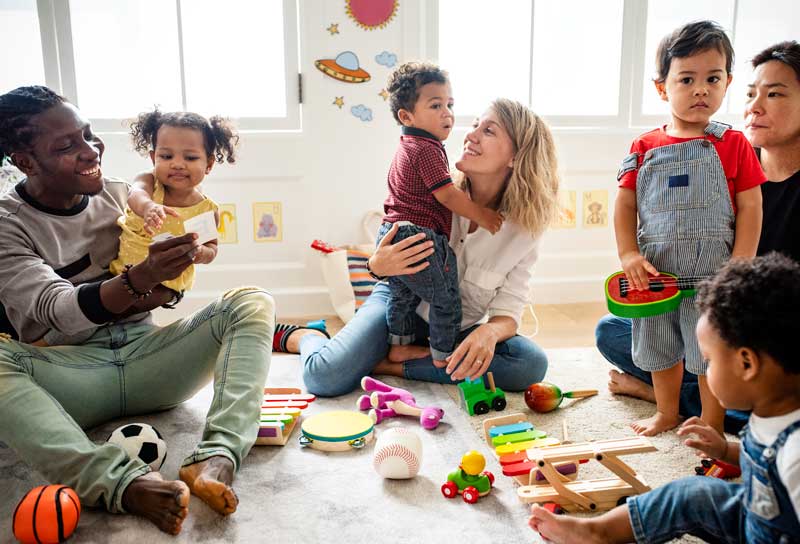
By establishing community partnerships, early childhood educators gain an ally in building home-school connections. They also learn more about how to support their families – and can even connect them with critical resources that families may need.
Cultivate family engagement early for student success later
As truly the first teacher in a child’s life, a family heavily influences their child’s earliest learning before they ever set foot in a classroom. And as experts in learning science and the development of children, educators craft the overall journey towards that learning success for every student they teach.
But it’s when these two forces come together in a collaboration that students and the entire school community gain the greatest benefits. By designing an intentional approach to family engagement in early childhood education, educators and organizations enable the long-term success of young learners like Jaz. And I know that, when that first day of preschool arrives, Jaz’s family will be there, ready to collaborate with the newest teacher joining her learning team!

About the author
Maren Madalyn has worked at the intersection of K12 education and technology for over a decade, serving in roles ranging from counseling to customer success to product management. She blends this expertise with fluid writing and strategic problem-solving to help education organizations create thoughtful long-form content that empowers educators.

